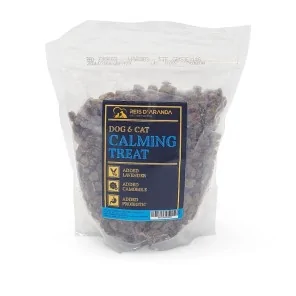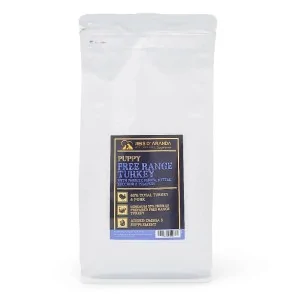The Tornjak originated from genetically homogeneous, almost extinct, indigenous shepherd dogs. These dogs have...
THE CHIHUAHUA
THE ORIGIN OF THE CHIHUAHUA
The Chihuahua is one of the smallest and most recognisable dog breeds in the world.
Originating in Mexico, this breed has a fascinating history dating back to ancient times. The Chihuahua is believed to be descended from an ancient breed of dog called the Techichi, which was bred by the Toltec civilisation in Mexico. These dogs were considered sacred and were believed to have mystical properties. The Toltecs believed that Techichis had the ability to cure diseases and protect their owners from evil spirits.
With the arrival of the Spanish conquistadors in Mexico in the 16th century, the Techichis were crossed with European dogs, giving rise to the Chihuahua we know today. The conquistadors were impressed by the small size and unique personality of these dogs, and began breeding them and taking them to Europe. They soon became very popular with European royalty and nobility.
The name ‘Chihuahua’ comes from the region of Mexico of the same name, where the breed is believed to have been developed and perfected.
It was recognised by the Fédération Cynologique Internationale (FCI) in 1954. The FCI is the world's largest organisation dedicated to dog breeds and is responsible for setting standards for the breeding and recognition of dog breeds worldwide.
The inclusion of the Chihuahua in the FCI register was an important step for the breed, as it gave it official recognition on an international level. From that moment on, the Chihuahua was classified in FCI Group 9, which includes companion dogs.
Recognition by the FCI helped to increase the popularity and acceptance of the Chihuahua as a legitimate and valuable breed of dog. Since then, the Chihuahua has continued to gain a worldwide following and has become one of the most loved and recognised breeds in the pet world.
THE CHIHUAHUA STANDARD
The Fédération Cynologique Internationale (FCI) standard for the Chihuahua describes the physical characteristics and desired temperament for this breed. The following are some of the key points of the FCI standard for the Chihuahua:
- GENERAL APPEARANCE: The Chihuahua is a small dog of small size and compact build, slightly longer than tall. He should be alert, active and elegant, square in appearance (slightly more rectangular is permitted in bitches for breeding purposes). Height at withers is not to be taken into account, but weight should be between 1 and 3 kg, the ideal being between 1.5 kg and 2.5 kg. Dogs weighing less than 1 kg or more than 3 kg will be disqualified.
- HEAD: The head of the Chihuahua is a distinctive feature of the breed; it should be rounded, with a slightly domed skull and a fine, short, straight muzzle, with tight lips and a scissor or pincer bite.
The eyes are large, round and preferably dark (light eyes are permitted but not desirable), never protruding.
The ears are large, open and very broad at the base, forming a lateral angle of 45° when at rest.
- BODY: The body of the Chihuahua is compact and well proportioned, very square in males and a little more rectangular in bitches. The back is straight and short, with a short withers and a very muscular loin, and the tail is moderately long and set on high, with a broad base tapering as it reaches the tip; in movement it is carried high, arched or in a semicircle over the croup, never curled or drooping over the croup.
- COAT: The Chihuahua can have two types of coat: short and smooth or long and soft. Both varieties are equally valid according to the FCI standard. Hairless dogs and those with excessively long and fluffy coat (Pomeranian type) are not permitted.
- COLOUR : All colours, varieties and combinations are accepted with the exception of merle and albinism.
- Slight faults: Missing teeth, double dentition (retained milk teeth), pointed ears, short neck, long body, long body, sloping back (lordosis) or arched back (xyphosis), drooping croup, narrow chest, flat ribcage (must be arched), tail badly set on, crooked or short, short legs, elbows turned out, ankles close together.
- SERIOUS FAULTS: Narrow skull, bulging, sunken or small eyes, long muzzle, undershot or overshot mouth, weak knees.
- DISQUALIFYING FAULTS: Aggressiveness or extreme shyness, any dog showing signs of physical or behavioural abnormalities, ‘deer’ type dogs (extremely slender, refined head, long neck, slender body, long legs....), open hands, dogs with a long neck, long legs, long legs.... ), open hands, dogs with open muzzle, drooping or short ears, deformed bite, dogs with extremely long body, lack of tail or split tail, lack of hair (alopecia) in the short haired variety, ‘merle’ or albino dogs, dogs with ‘bulldog’ type characteristics, weight less than 1kg or more than 3kg.
THE HEALTH OF THE CHIHUAHUA
The Chihuahua is a breed with a tendency to suffer from certain diseases which are entirely preventable, either because special care is taken in the handling of the dog or because the relevant health tests are carried out before breeding (which is done in selective and ethical breeding).
- CHONDROSPLASIA [DWARFISM]: A genetic condition characterised by abnormal cartilage growth, it is hereditary and dogs carrying or affected by this disease should not be bred. It is hereditary and dogs carrying or affected by this disease should not be bred. It can be determined if a dog is a carrier by proper health testing via laboratory prior to breeding.
- CHONDRODISTROPHY: Chondrodysdystrophy (CDDY) is a defining trait of many breeds of dogs and is characterised by a reduction in the length of the long bone (shorter legs) as a consequence of early changes in the structure of the growth plates.
- PATELLA LUXATION: Patellar luxation (dislocation) is a condition in which the patella is displaced out of the femoral groove when the knee is flexed. It can be further characterised as medial or lateral, depending on whether the patella rests on the inside or outside of the knee respectively, is hereditary and can be observed when the dog walks, jogs, runs or jumps as the dog briefly and repetitively limps.
There are different degrees of severity and it is treated in the operating theatre. It can be prevented in different ways.
- HYDROCEPHALIA: Hydrocephalus, as its name suggests, is the accumulation of cerebrospinal fluid in what are called cerebral ventricles. This causes them to increase in size and thus damage the cerebral cortex by compressing it against the bones of the skull. It can be congenital (occurring before the age of 6 months) or acquired, with the latter occurring as a result of infection or trauma.
- HYPOTHYROIDISM: Hypothyroidism occurs when the thyroid gland does not produce and secrete enough thyroid hormones. The thyroid gland is located in the mid-neck region near the voice box (larynx). In dogs, the thyroid gland is made up of two separate lobes that lie on either side of the trachea (windpipe). Thyroid hormones play an important role in metabolism and affect the function of many parts of the body.
- PLL [primary lens luxation]: It is a well recognised, painful and blinding inherited eye condition that affects many breeds of dog, particularly terrier and terrier-type breeds. In affected dogs the fibres that support the lens break down or disintegrate. As a result, the lens falls into the wrong position within the eye.
- PRA [Progressive Retinal Atrophy]: There are two types of photoreceptor neurons in the retina: rods (located more in the periphery of the retina) and cones (located closer to the centre). These photoreceptors gradually deteriorate so that the retina is no longer able to capture light and, as it is unable to send information to the brain, the animal gradually stops seeing. In many cases, it is difficult to detect and the owner does not realise it until the disease is very advanced.
As far as diet is concerned, a diet that helps dental wear is preferable due to the small size of the Chihuahua's teeth (which makes them prone to tartar build-up), as well as a diet as low in fat as possible and good in sodium, which will help to prevent obesity and heart problems. A good dry food for Chihuahuas is the Reis d'Aranda Angus veal dry food for adult dogs, and for puppies we can opt for the Reis d'Aranda turkey puppy food.
THE PERSONALITY OF THE CHIHUAHUA
They are excellent companion dogs, active and sociable and love to be the centre of attention, but they should be socialised correctly and limits should be set from an early age, as they can develop behavioural problems, especially because they are very brave and think they are bigger than they really are.
CONCLUSION
The Chihuahua is a wonderful breed for all those families who know how to be responsible enough to handle them properly, especially if there are small children living at home.
Leave a comment
Log in to post comments
















